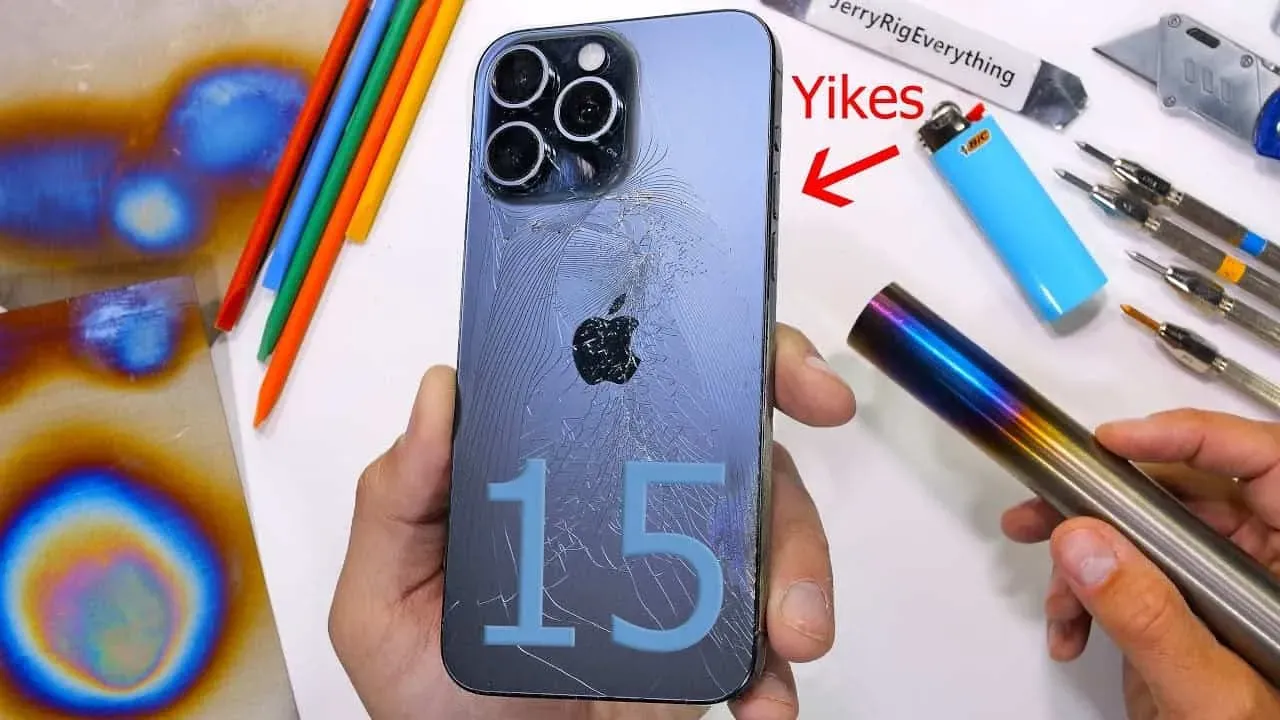 |
| Image: JerryRigEverything via YouTube |
In the world of smartphones, durability is a key factor that consumers consider when choosing their next device. The iPhone 15 and 15 Plus have recently undergone a rigorous durability test, and the results are quite surprising.
The Bend Test
One of the most common concerns for smartphone users is whether their device can withstand bending forces. The 15 Plus, in particular, was subjected to a bend test not once but twice to ensure the accuracy of the results. The outcome of these tests provides valuable insights into the build quality of these iPhones.
Materials Matter: Aluminum vs. Titanium-Alloy Frame
The iPhone 15 and 15 Plus are constructed with aluminum frames, distinguishing them from their Pro and Pro Max counterparts, which boast a first-gen titanium-alloy frame. This difference in build materials has led to speculation about the durability of the more affordable models compared to their high-end counterparts.
However, a recent bend-test video has shown that the iPhone 15 and 15 Plus are no less durable than their top-end siblings. Despite their aluminum frames, these devices proved to be remarkably robust.
Scrutinizing iPhone 15 Pro Max
There is even some evidence to suggest that the iPhone 15 Pro Max, with its new "titanium-forged" frame, may not be as durable as its stainless-steel predecessor. This fancy new build material is fused to an inaugural aluminum plate situated between the rear panel and MagSafe charging coil. Surprisingly, this design tweak appears to have unintended consequences, as it allows for a slight air-gap that can lead to the Pro Max's back glass shattering under bending forces.
Putting the iPhone 15 Plus to the Test
JerryRigEverything's Zach Nelson, a well-known tech reviewer, decided to investigate these findings further by subjecting the iPhone 15 Plus to the same bend test. Despite sharing the same size as the top-end 15 Pro Max, the cheaper model lacks the titanium frame and a full complement of rear cameras. However, the results were astonishing—the iPhone 15 Plus remained completely intact when bent from any direction, proving its remarkable durability even with a mere aluminum frame.
Durability vs. Scratches
While durability tests are essential, it's also worth considering the day-to-day wear and tear that a smartphone can experience. The smaller base model, the iPhone 15, proved to be equally robust in this regard. In a classic "scratches at a level 6, with deeper grooves at a level 7" test, it outperformed the average comparable Android smartphone. However, it's worth noting that the iPhone 15's new finishes, often described as "washed out" or "reminiscent of a 4-year-old's food coloring experiment," have garnered criticism as the weakest aspect of these devices.
Conclusion
In conclusion, the durability of the iPhone 15 and 15 Plus, despite their aluminum frames, stands strong in comparison to their high-end counterparts with titanium-alloy frames. These devices have passed rigorous bend tests, demonstrating their resilience against bending forces. Additionally, the base model iPhone 15 proves to be robust even in terms of everyday scratches, though its finishes have received mixed reviews. When it comes to choosing a smartphone, these durability tests provide valuable insights for consumers making informed decisions.
